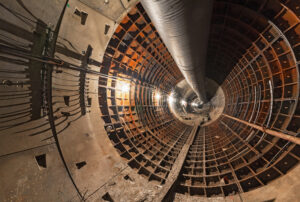PG&E’s Safety Lapses Responsible for San Bruno Pipeline Disaster

PG&E Executives Warned of Safety Hazards
An internal audit by PG&E’s own risk-management team prior to the blast revealed a weak safety system. The audit uncovered deficient records, poor training practices, improper maintenance of their regulators and shut-off valves as well as a failure to maintain pipeline leak surveys.
The company’s report warned executives that the company did not have an efficient means of responding to an emergency and encouraged the company to install more automatic shut-off valves on its pipelines. The audit was given to company executives just a month before the San Bruno pipeline exploded.
Regulation Reform
In light of the series of missteps that led to the San Bruno disaster, the NTSB has called for an overhaul of its own federal safety regulations to try and prevent a similar disaster from occurring in the future. Key recommendations included removing “grandfather” provisions that would eliminate the need for high-pressure water testing on pipelines installed prior to 1970 and the requirement that gas providers install automatic shutoff valves in areas with a dense population.
The NTSB would like to see improvements to testing made across the nation. The agency recommended all pipelines that transmit gas be reconfigured so they can utilize “smart pig” devices to locate defects.
PG&E Slow to Respond
If history is any indication of future behavior, stricter regulations may be needed to compel PG&E to address the safety issues caused by their aging pipelines. The NTSB has made recommendations to PG&E in the past that were ignored.
In 1982, a plastic natural gas pipeline manufactured by DuPont, known as Aldyl-A, was discovered to be prone to cracking and sudden failure. The company notified its customers immediately of the problems. PG&E took no action.
In 1998, the NTSB subsequently recommended PG&E assess and if needed, replace 1,200 miles of the Aldyl-A pipeline. PG&E elected to do nothing. As a result, there was another explosion. This time, a condominium in Cupertino was destroyed this summer when a piece of Aldyl-A pipe beneath the home failed.
A PG&E spokesperson claims the company has monitored the Aldyl-A pipeline over the years. Such a statement is surprising in light of the NTSB report revealing the company’s relaxed recordkeeping and safety practices.
The company is now taking steps to address concerns with both pipeline systems. Days after the Cupertino blast, PG&E discovered 15 leaks in the pipes beneath the condominium unit. Faced with mounting pressure, PG&E has now announced plans to replace the entire 1,231 miles of deficient pipeline throughout the state.
To address issues like the pressure build up that led to the San Bruno explosion, PG&E is actively working on conducting pressure-tests of its most dangerous pipelines.
Legislators May Step In
Still, state legislators do not feel it is enough. In light of the company’s past approach to safety issues, Jerry Hill and Paul Fong have introduced legislation that would force the California Public Utilities Commission to enforce any recommendations made by the NTSB.
The assemblymen openly expressed their frustration with both PG&E and the California Public Utilities Commission for their failure to follow through on the NTSB warnings. The proposed bill is being drafted and is expected to be introduced to the legislature in January.
A new law may help prevent future injury, but it will not address the needs of those who have already been hurt by the PG&E pipeline. Victims of the San Bruno fire need to be assured that they will have an advocate who will work diligently to make sure those responsible for their injuries are held accountable.
If you or a family member was injured or had your home damaged or destroyed as a result of the San Bruno pipeline disaster, you should contact an experienced San Francisco personal injury attorney who can review your options with you.
